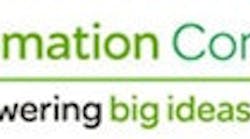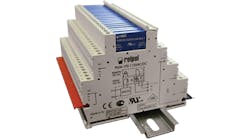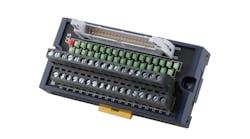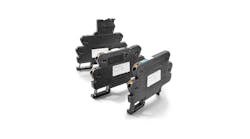"Traditionally, on any major project, 60% of the I/O is soft I/O – gateway-related I/O – on Modbus," said Grant Le Sueur, senior portfolio director, control and safety, Schneider Electric, in his session on the company's strategy for integration technology at its 2015 Global Automation Conference, today in Dallas. "Despite its age, Modbus has failed to be superseded by anything superior. It's a reliable old friend that does what we ask it to do."
On current projects, "When we do our analysis of all the things on our gateways, it turns out that 97.5% of it is on Modbus," Le Sueur said. "Today, it's in an IP stack so it's faster and runs on a different kind of wire, but it's really the same. It's been there for 30 years, and we expect it to be around for another 30 years."
Profibus and Foundation fieldbus are more sophisticated, but that sophistication "makes the technician's job harder, not easier," Le Sueur said. "We want to make the technician's job easier. So the next evolution will not come by integrating a new protocol. Instead, we're organized around ways to use Modbus better."
"We want to get out of the business of engineering devices and protocols, and into the business of using the stuff on the wire." Grant Le Sueur spoke about the future of integration at Schneider Electric's 2015 Global Automation Conference today in Dallas.
But today, when engineers look at a proposal and see a gateway with 500 soft I/O, the estimated engineering cost goes up. What does that I/O do? How will we represent it on the screen? Who designed the thing on the end of the wire?"OPC UA doesn't help – it just transfers the same bunch of tags from a familiar protocol to one we don't know much about," Le Sueur said.
"Today, we integrate by browsing for tags with individual bits. Instead, we want the devices to describe themselves and present us with instructions on how to integrate them," Le Sueur said. A pump connected to a variable-speed drive, with I/O for control and diagnostics, should announce itself. It should say, 'Here are my inputs and outputs. Here's how to render me on the screen, how to represent me to maintenance and to operations. Use me.'"
Le Sueur said, "We want to get out of the business of engineering devices and protocols and into the business of using the stuff on the wire."
Today, Schneider Electric's closest capability is through PlantStruxure PES (process expert system) and industrial libraries. "You can browse a library of devices and push them to the PLC," Le Sueur said. "It has the I/O and a faceplate instead of ladder logic or function blocks. Instead of a weird, interposing representation of software functions, we have the thing on the end of the wire."
With Modicon and Unity Pro, devices also can be self-describing. "It's wicked cool," Le Sueur said. "It makes us into more powerful engineers."
Instead of assembling pumps, tanks, heat exchangers, valves and thermocouples, engineers can focus on how devices are used and on steering logic: the processes, procedures and activities that add value.
"For the vision of ISA 106 (procedural automation) to work, we must remove the mundane task of describing logic," Le Sueur said. EDDL is trying to do this, but how devices describe themselves should be independent of protocol. "Then we can move on to a structured way of organizing steering logic – the purpose of ISA 106 – and control systems can really support it."
When you connect it up, a device should say, "I'm a flowmeter. Here's what I do and how to talk to me. Here's how to represent me to your operator. Here's what can go wrong and how to troubleshoot and repair me.
"Engineers' jobs are to make money for companies by doing valuable things, not to cookie-cutter data trying to get things to work," Le Sueur said. "In the future, there will be no integrating," Le Sueur said. "Devices are self-describing and self-integrating.
"And after that, why not be able to just scan in the P&ID and let a robot do the programming?"




